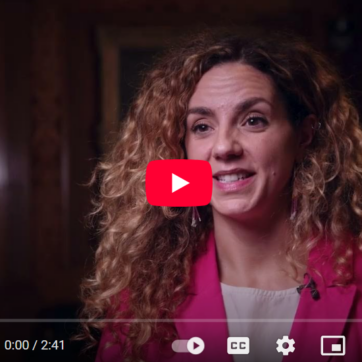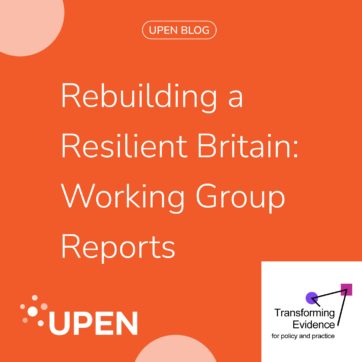The final guidance for REF2021 was released this week. Most of the guidance on impact is consistent with what I expected from the consultation. For the full guidance on the submission of impact case studies to REF2021 see pages 68-76 of the and do a keyword search for “impact” to find any specific guidance for your Main Panel or Unit of Assessment in the Panel Criteria and Working Methods.
Although the sector already knew most of the detail on impact contained in the final guidance, there were a few surprises, and some important changes were confirmed this week. You can read my full analysis here, but these are the most important things you need to know if you are in a hurry.
- Main Panel A will no longer prejudice against qualitative evidence or continuation case studies. There were major climb downs from Panel A in the new guidance, assessing continuation case studies on merit alongside new ones and accepting qualitative evidence without pre-judgement. ◦In the consultation documents, Panel A expressed a clear preference for quantitative evidence of impact, but the guidance is now clear that “the panels anticipate that impact case studies will refer to a wide range of types of evidence, including qualitative, quantitative and tangible or material evidence, as appropriate. Individual case studies may draw on a variety of forms of evidence and indicators. The panels do not wish to pre-judge forms of evidence… and no type of evidence is inherently preferred over another.”
In the consultation documents they wanted to “encourage the submission of new case studies” with continuation case studies to be “considered”. In the final guidance, Main Panel A will “assess each case study on merit and wishes to receive information on how any continued case study relates to that submitted in REF 2014”. This is now consistent with the main guidance across all panels, encouraging “submitting units to submit their strongest case studies irrespective of whether they are new examples or represent continuing impact from those submitted in REF 2014”. - Impact case studies and outputs can be split between different Units of Assessment. A researcher’s outputs and impact can be submitted to different UoAs, either to the same UoA as they submit their outputs or to another UoA as long as the research underpinning the case study fits within the scope of the other UoA. However, the UoA submitting the case study will have to “describe how the selected case studies relate to their approach to achieving impact” in their environment statement
- New definition of a continuation case study. According to the final guidance, a continuation case study should have 1) no significant new research underpinning the impacts, AND 2) the impacts and beneficiaries are similar to those in 2014. Crucially, to be considered a continuation case study, it must meet both criteria (no significant new research and similar impacts and beneficiaries). ◦This means that case studies based on the same body of research as REF2014 are not considered continuations unless they have also generated new types of impacts for new beneficiaries.
Case studies that generate similar impacts for similar beneficiaries to those claimed in REF2014 are not considered continuations unless these new impacts and beneficiaries have been made possible by new research - Case studies based on collaborative research can share the same impacts. For impacts underpinned by research from different Universities or different units within the same University, it is possible to submit identical descriptions of impact as long as the underpinning research section explains how the submitting unit “made a distinct and material contribution to the impact”.
- Large teams get less space. Names, roles and periods of service for researchers have to be given in the template, reducing the space available for graded material for case studies based on research by large institutional teams. The rest of the meta-data is additional to the five page limit. This includes details of research funding, despite the fact that this is listed under the “references to the research” section in the case study template. To save room for material that is more likely to contribute towards high scores, it would be unwise to submit funding data twice, but bear in mind that funding that only appears in the additional meta-data will not routinely be given to panels, so if funding was from prestigious sources, this would need to be mentioned in the narrative justifying the quality of the underpinning research to ensure panellists are aware of this.
- Limited new guidance on impacts from public engagement. In keeping with REF2014, public engagement case studies “must show that the engagement activity was, at least in part, based on the submitted unit’s research and drew materially and distinctly upon it”. The definition of underpinning research in REF2021 is “a body of work produced over a number of years or may be the output(s) of a particular project. It may be produced by one or more individuals” which must “include references to one or more key research outputs”. This means that groups who created a large body of work could describe this wider body in the underpinning research section with examples of key outputs to illustrate in the list of outputs (the guidance says, “each case study must include references to one or more research outputs that best illustrate the research underpinning the impact”). Although the new definition of underpinning research is less tightly linked to outputs (for contrast, in REF2014, it was “research embodied in one or more outputs conducted by one or more individuals, teams or groups, within one or more submitted units”), there is no indication that this body of work could include work by researchers beyond the submitting unit, which means that public engagement case studies that draw widely from across their discipline may still struggle to demonstrate that their impacts drew “materially and distinctly” on the submitted unit’s research.”
Downloads
Back to resources


